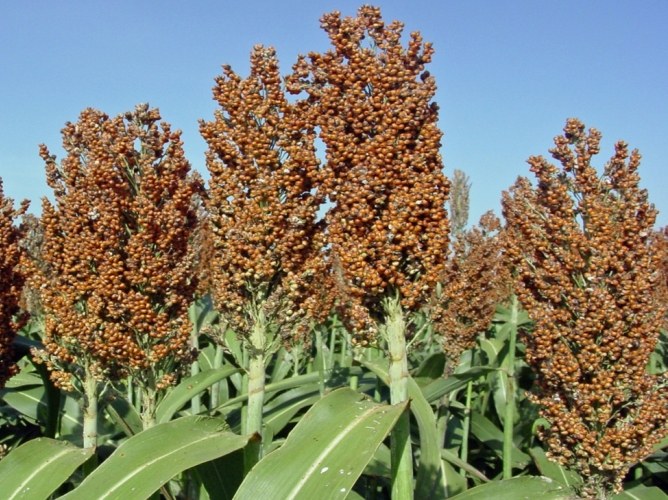Types and use of sorghum
Sorghum is a genus of perennial or annual herbaceous plants of the family Gramineae and in some countries is considered the main grain crop. Externally the grains of this plant are somewhat similar to corn, and nutritional benefits her in no way inferior. Sorghum grain go into the production of alcohol, starch, flour and cereals. From the stems of such a culture get the honey and the syrup, made of straw brooms and paper, and weave a variety of products.
Being heat-loving spring crop with cross-pollination, this plant is very resistant to drought. It quickly adapts to adverse conditions and grows in almost all soils, including saline. The growing period of grain sorghum is approximately 130 days.
Classification of sorghum is far from complete, as this plant has an incredible number of species.
Distinguish sweet sorghum, which is used in the confectionery industry; grain sorghum, bred for the production of flour; lemongrass, which after processing becomes a unique seasoning. Herbaceous varieties are grown to feed livestock. There is also sorghum, with stiff branches which are well suited for the manufacture of basketry and brooms.
Sorghum: interesting facts
Homeland sorghum is considered the Central and North-Eastern Africa. A considerable area in ancient times, this plant was held in Sudan and Ethiopia. There's also today, you can find the greatest number of both wild and cultivated varieties of sorghum. This plant is cultivated in India and China. In these countries sorghum is the main cereal, reaching for the preparation of bread.
In Europe and America, this culture came relatively late – after the XV century. Now all the continents are more than fifty species of sorghum. This cereal is cultivated generally in the southern and warm regions. It is presented in the steppe zone of Russia and Ukraine.
To grow sorghum not too difficult, though it is and requires a certain skill. It is only necessary to note that the best such plant survives in areas where hot summers and not too much rain.
In cooler areas sow sorghum is recommended as late as possible, since culture is very not tolerate frost on the ground.
Sorghum can not tolerate the neighborhood of weeds, and therefore needs careful and timely weeding and thinning. This applies especially to those varieties that are grown for the manufacture of basketry and brooms. If the plant is not time to thin and not to free from weeds, will be formed too underdeveloped and small "whisk".
